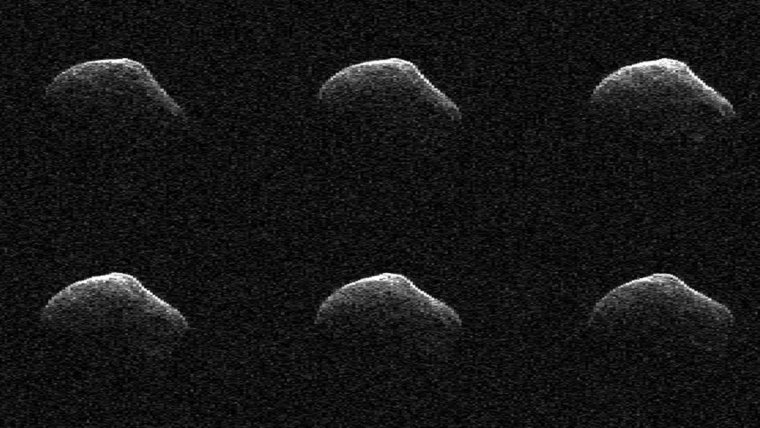| News / Science News |
Comet Flying by Earth Observed with Radar and Infrared
NASA | MARCH 28, 2016
Astronomers were watching when comet P/2016 BA14 flew past Earth on March 22. At the time of its closest approach, the comet was about 2.2 million miles (3.5 million kilometers) away, making it the third closest comet flyby in recorded history.

These radar images of comet P/2016 BA14 were taken on March 23, 2016, by scientists using an antenna of NASA's Deep Space Network at Goldstone, California. At the time, the comet was about 2.2 million miles (3.6 million kilometers) from Earth.
![]()
The scientists used the Goldstone Solar System Radar in California's Mojave Desert to track the comet.
Radar images from the flyby indicate that the comet is about 3,000 feet (1 kilometer) in diameter and has an irregular shape: looks like a brick on one side and a pear on the other.
According to the new radar observations, comet P/2016 BA14 appears to spin around its axis once every 35 to 40 hours.
YOU MAY ALSO LIKE



